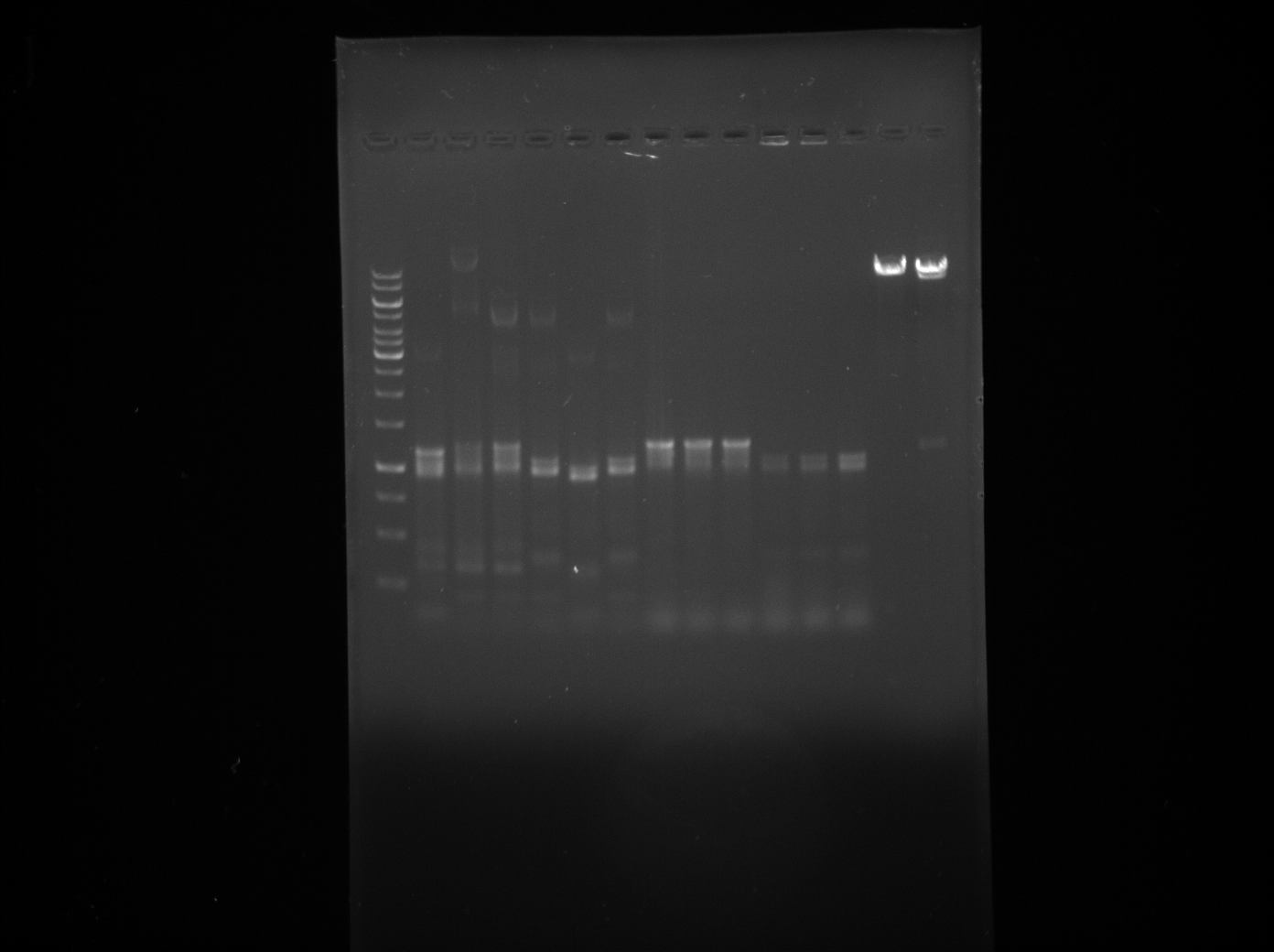Team:Newcastle/18 June 2010
From 2010.igem.org
(Difference between revisions)
Swoodhouse (Talk | contribs) |
(→Polymerase Chain action protocol) |
||
| Line 6: | Line 6: | ||
# To avoid contamination, wear gloves | # To avoid contamination, wear gloves | ||
# To achieve optimum results, always do everything on ice | # To achieve optimum results, always do everything on ice | ||
| - | |||
| + | Setting up: | ||
| + | |||
| + | #A basic PCR set up requires several components and reagents.[6] These components include: | ||
| + | #DNA template that contains the DNA region (target) to be amplified. | ||
| + | #Two primers that are complementary to the 3' (three prime) ends of each of the sense and anti-sense strand of the DNA target. | ||
| + | #Taq polymerase or another DNA polymerase with a temperature optimum at around 70 °C. | ||
| + | #Deoxynucleoside triphosphates, the building blocks from which the DNA polymerases synthesizes a new DNA strand. | ||
| + | #Buffer solution, providing a suitable chemical environment for optimum activity and stability of the DNA polymerase. | ||
[[Image:fri-gel.png|600px]] | [[Image:fri-gel.png|600px]] | ||
Revision as of 13:59, 24 June 2010

| |||||||||||||
| |||||||||||||
Polymerase Chain action protocol
Polymerase chain reaction (PCR) is a technique used to amplify a single or few a copies of a piece of DNA generating thousands to millions of copies of a particular DNA sequence.
- To avoid contamination, wear gloves
- To achieve optimum results, always do everything on ice
Setting up:
- A basic PCR set up requires several components and reagents.[6] These components include:
- DNA template that contains the DNA region (target) to be amplified.
- Two primers that are complementary to the 3' (three prime) ends of each of the sense and anti-sense strand of the DNA target.
- Taq polymerase or another DNA polymerase with a temperature optimum at around 70 °C.
- Deoxynucleoside triphosphates, the building blocks from which the DNA polymerases synthesizes a new DNA strand.
- Buffer solution, providing a suitable chemical environment for optimum activity and stability of the DNA polymerase.
 
|
 "
"
